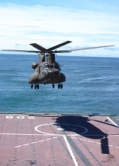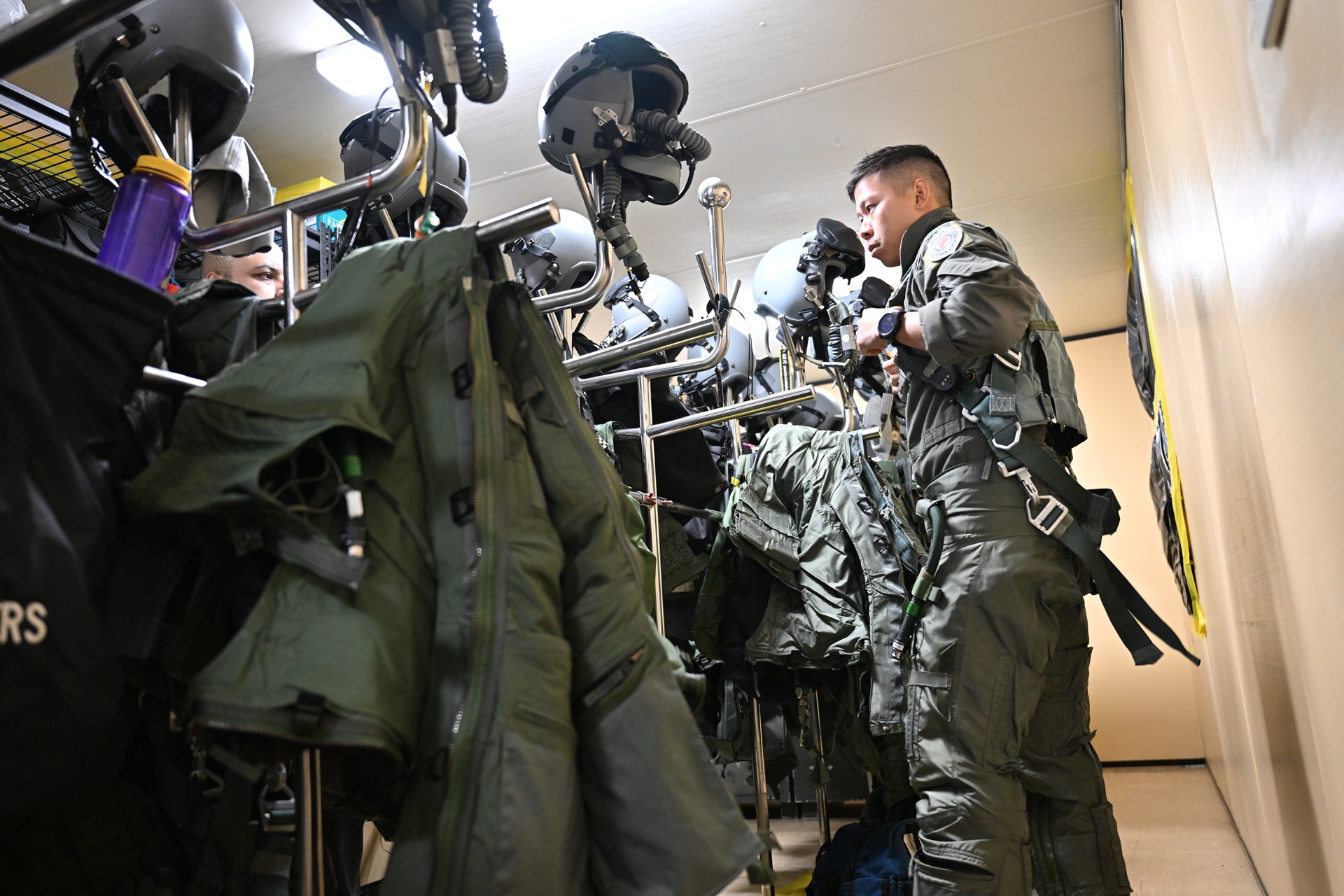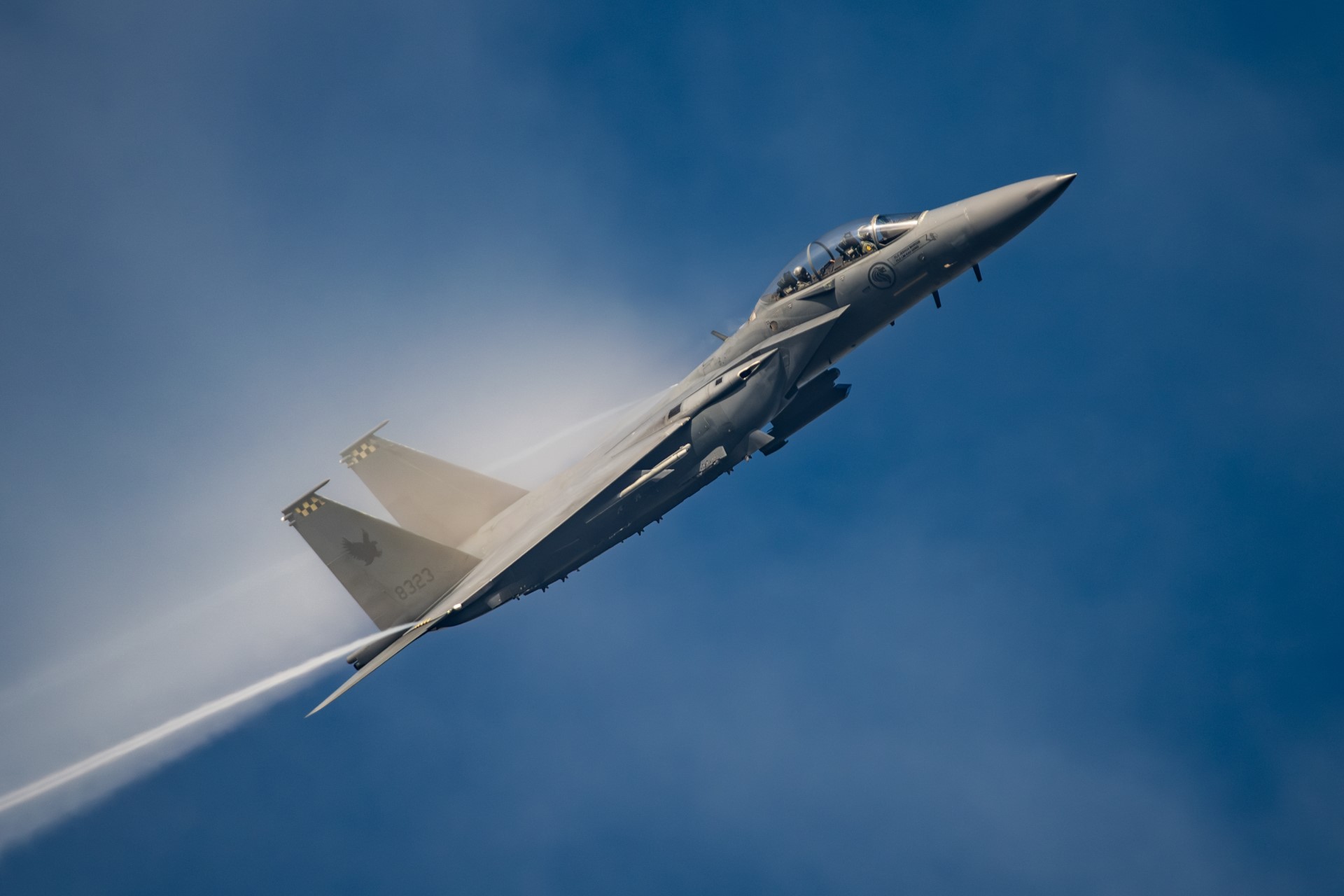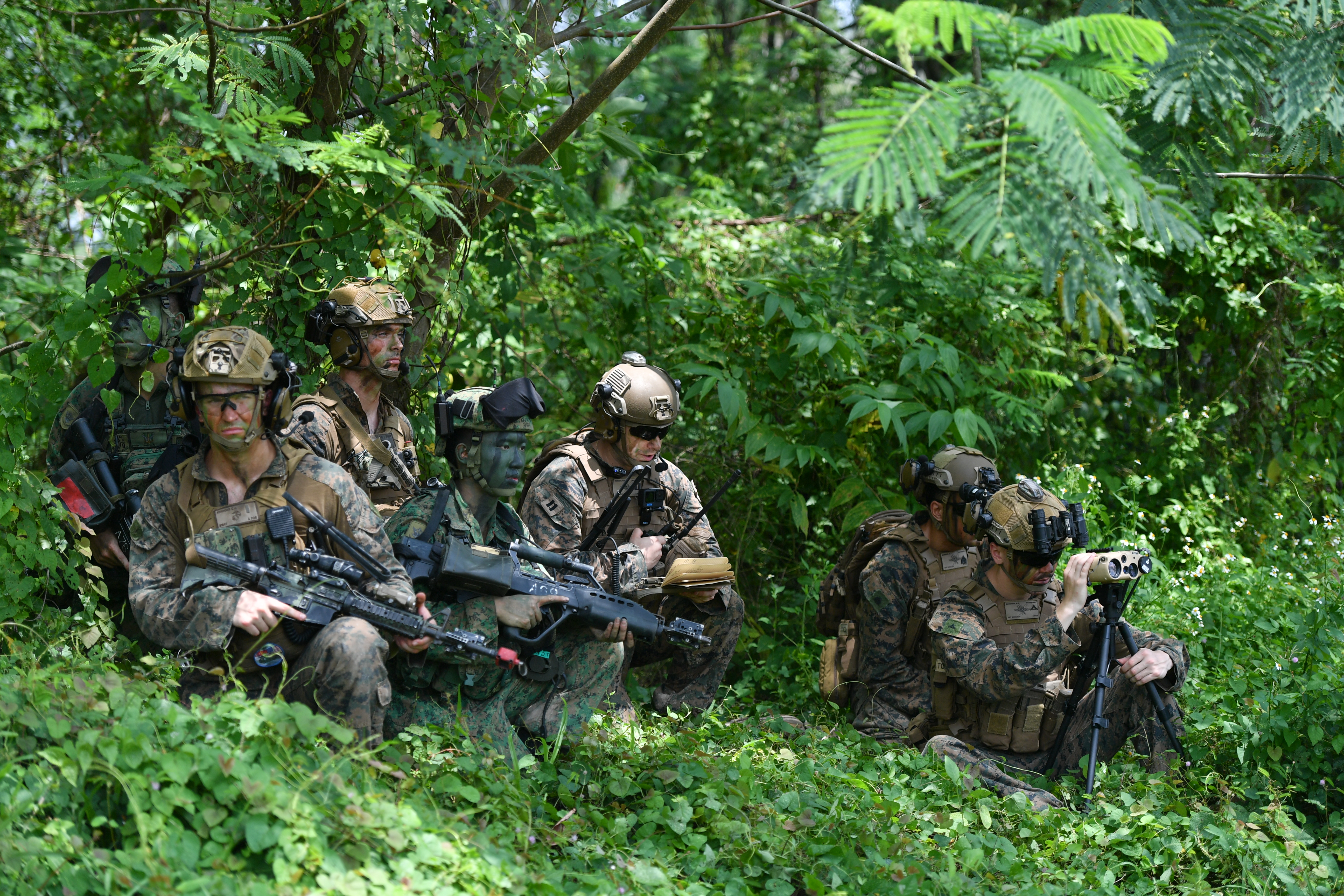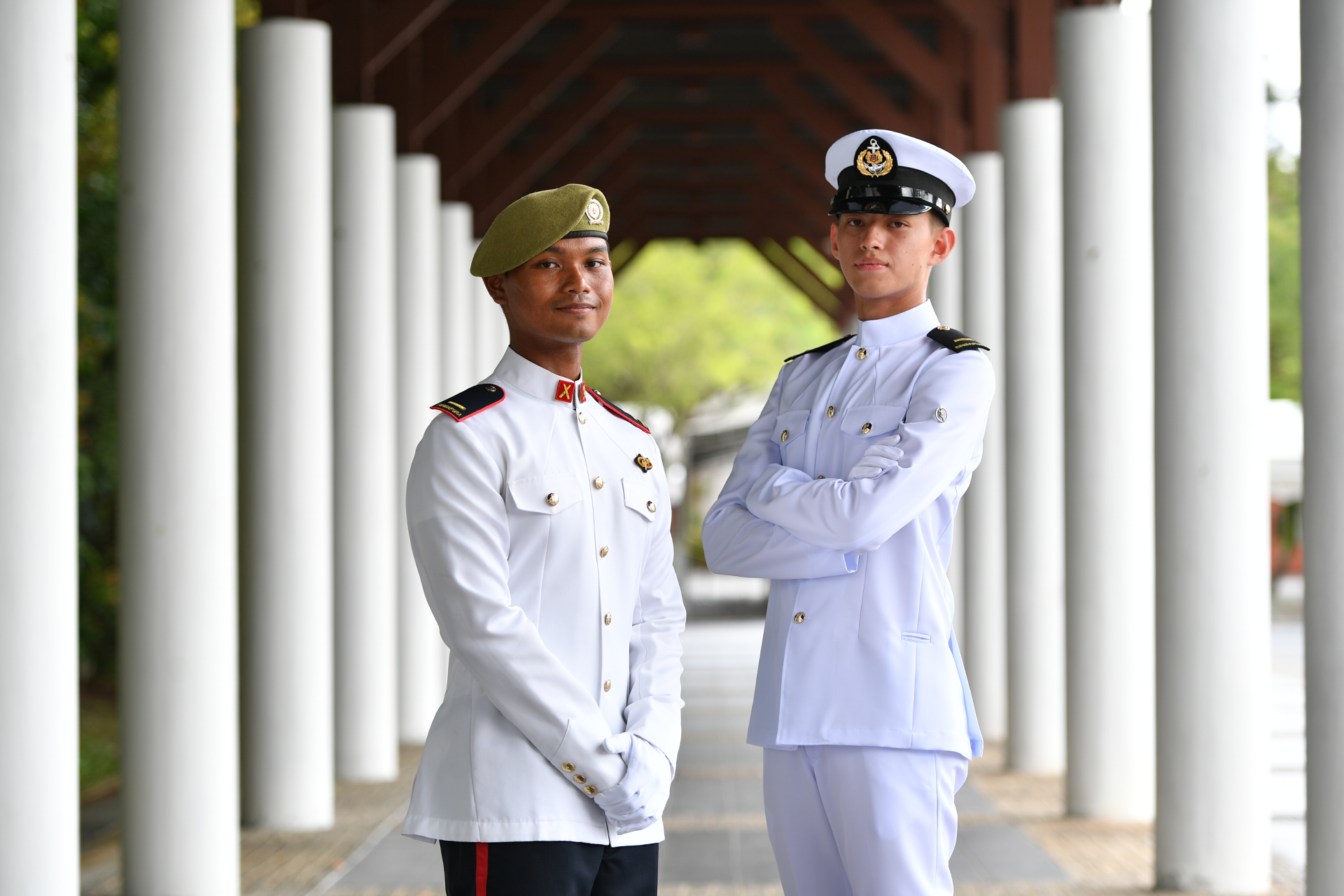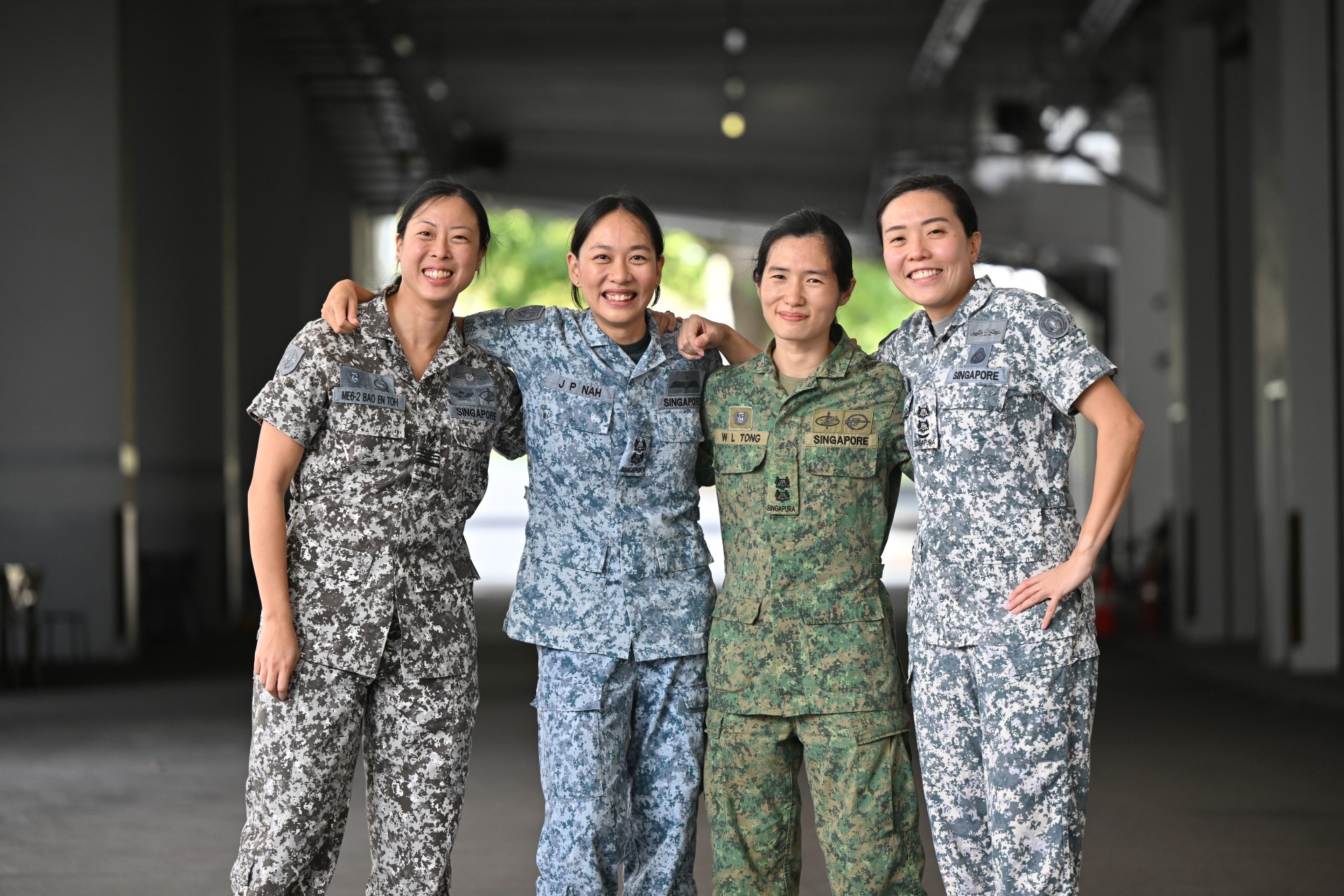FIRST CHINOOK LANDING ON LST
PHOTO // Lum Ngia and Gail Wan
The arrival of RSS Persistence has greatly enhanced the helo-staging capabilities of the Singapore Armed Forces (SAF) Humanitarian Assistance Task Force.
With the flight deck of the second SAF Landing Ship Tank (LST) at Meulaboh deliberately kept empty, the first Chinook landed on 7 Jan.
The LST flight deck measures 70 by 21 metres and can easily accommodate the 31-metre-long Chinook. Compared to a Super Puma, Chinooks can easily carry loads four to five times heavier.
They can also stay in the air longer without refuelling, which means they can fly directly to Medan from Meulaboh - ensuring a better reach and air-lift capability.
RSS Persistence was given clear orders to set off on 2 Jan, and in less than 48 hours, it had sailed from Changi Naval Base with close to 200 personnel onboard, comprising mainly SAF combat engineers.
They brought along with them more heavy equipment and vehicles, including cranes, a Combat Engineer Tractor and two LARC 5s amphibious vehicles that that can travel both in the sea and on land.
"Basically, we are here to supplement what is already here. We have been communicating with Endurance before we came, to find out what is needed," said RSS Persistence Commanding Officer, LTC Eddie Tang.
"We know the focus for engineers is to prepare a landing zone for helos on shore. We have also brought construction material, and if the situation calls to rebuild, we can help in simple building."
A place to house the displaced locals was also a concern voiced by the United Nations chief, Mr Kofi Annan, who visited Meulaboh on 7 Jan.
Said Mr Annan: "With the support coming in from the international community assistance, the (Indonesian) colonel said that there is no problem with water, there's no problem with food. It is a question of shelter."
"They are setting up tents to give them shelter, that I hope ventually will help them pick the pieces and repair their lives nd carry on."
He spent a day touring tsunami-ravaged coastlines of Sumatra to get a feel of the mammoth relief task that the UN is undertaking, as Indonesia's death toll soared over 110,000 people.
Meulaboh, a coastal town in West Sumatra, just 150 km from the epicentre of the massive undersea earthquake that created the tsunami, was Mr Annan's second stop after Banda Aceh.
After he arrived in an SAF Super Puma, he was briefed by Indonesian authorities on the magnitude of destruction as well as ongoing relief efforts.
Following that, he headed to Bupati, a local government building located near the city centre, where more than 1,500 homeless locals were staying.
Mr Annan was confident that humanitarian efforts were headed in the right direction and that the situation was improving.
"It's getting better, more and more resources are coming in and the logistics are also improving. You need to prepare the logistics to be able to distribute the food," he said.
"From what we have heard today, we are encouraged that we are making progress."
UN chief Mr Kofi Annan (in blue) touches down in Meulaboh in an SAF Super Puma.
Mr Annan gets an update of ongoing relief efforts from the TNI officers and COL Tan Chuan-Jin (second from right), the SAF Humanitarian Assistance Task Force Commander.
